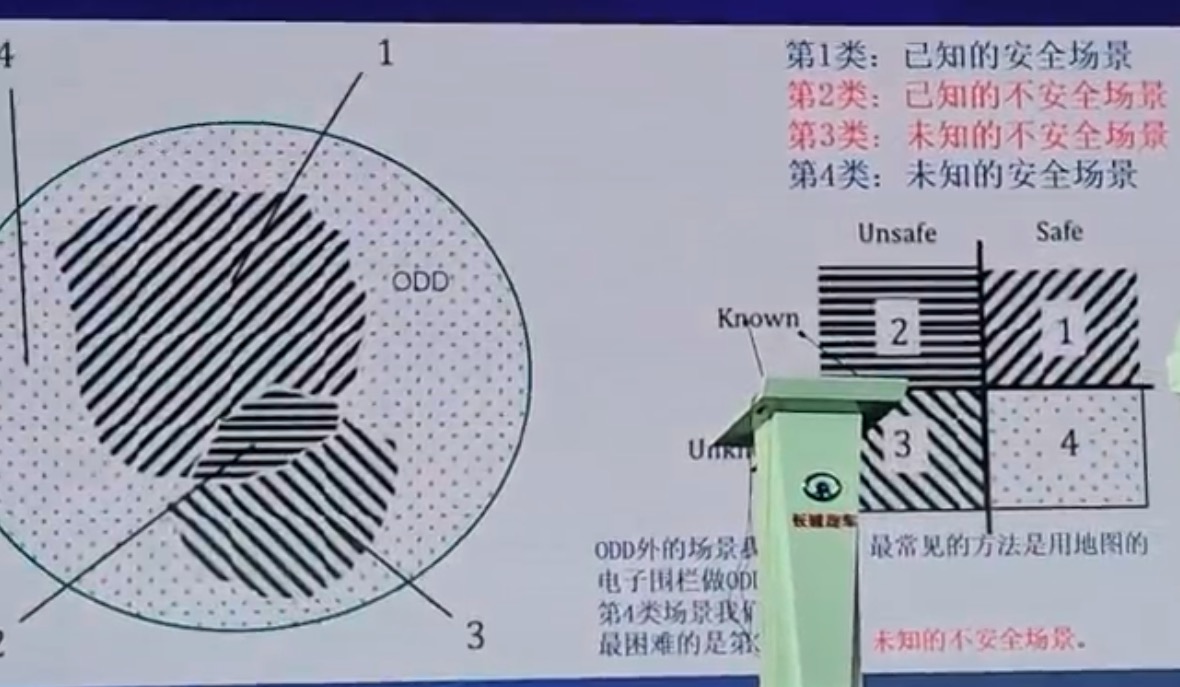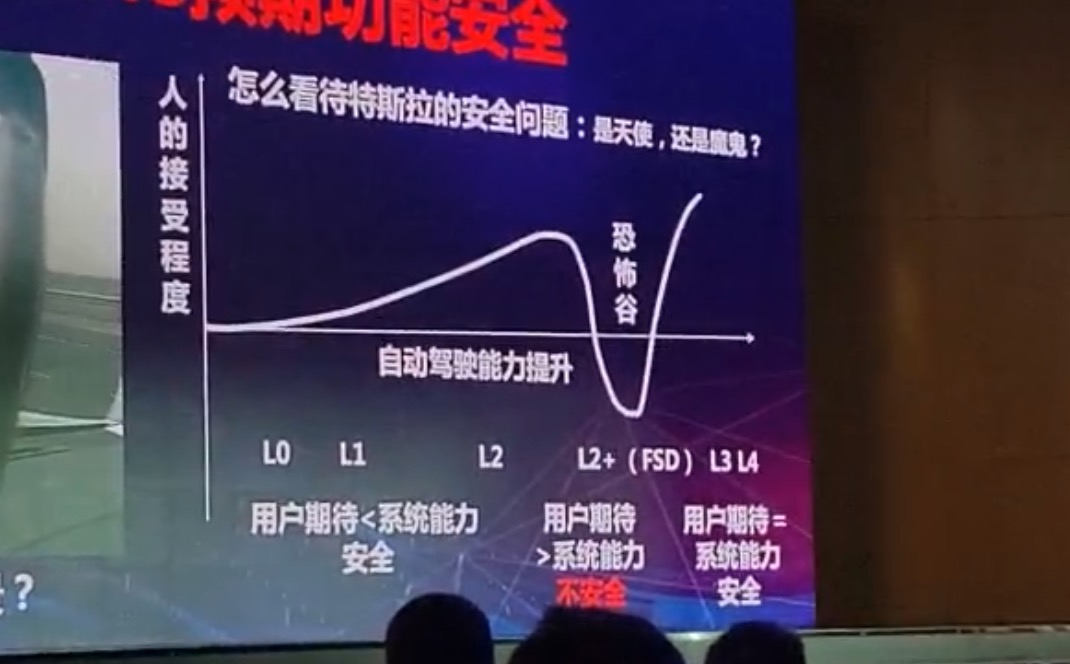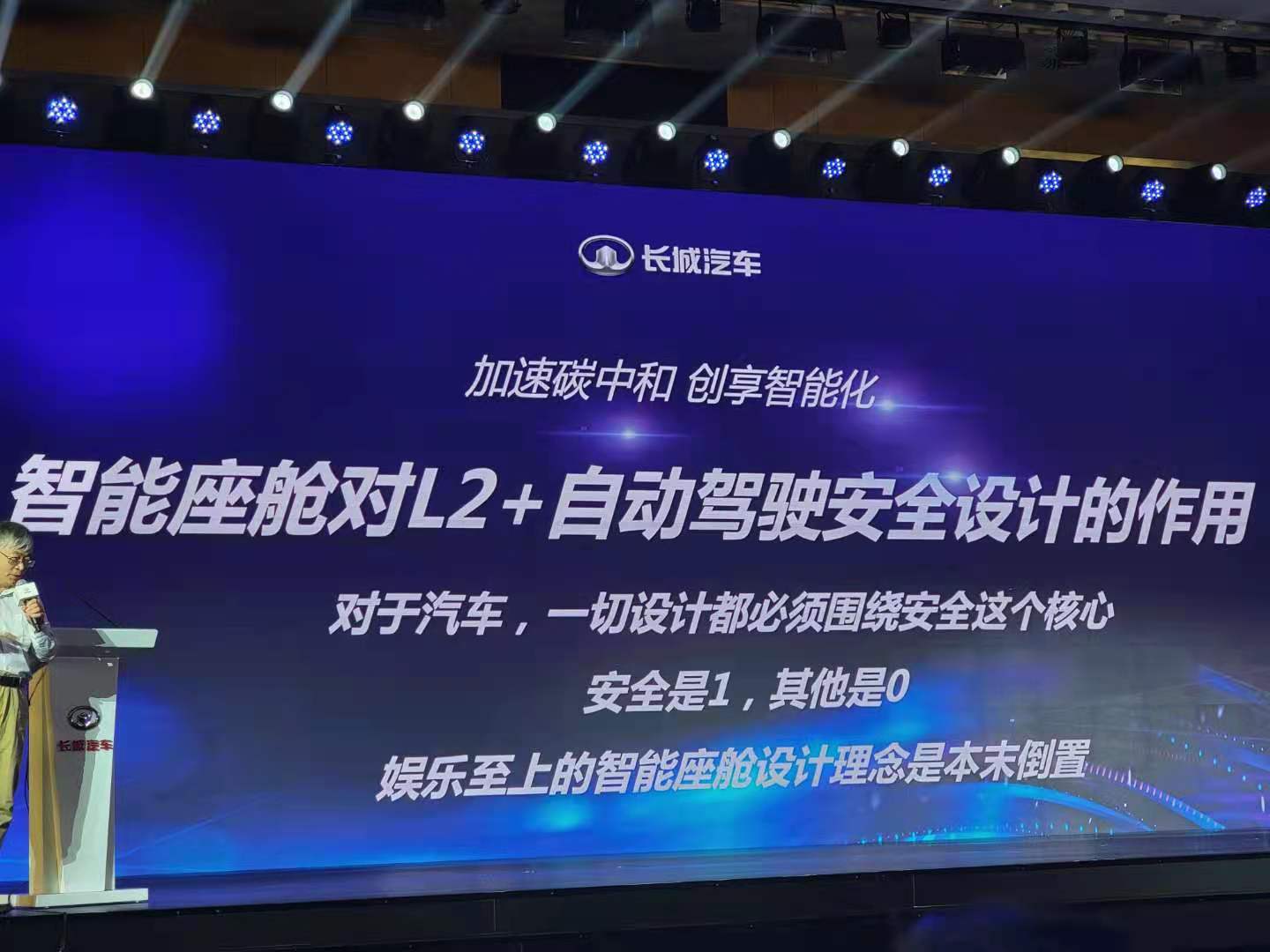At the 8th Great Wall Auto Technology Festival, Professor Zhuxi Chan from Tongji University presented a series of views on the current state of the assisted driving industry.

- Currently, traditional cars still occupy more than 99% of the market, but investors have lost interest in them.
Now, valuations are moving in two directions: new energy and intelligence. In the future, there may be shared business opportunities, and people are optimistic about shared car services.
- Smart Cockpit
The intelligence of the cockpit has been recognized by everyone. If the car doesn’t have a large screen, voice interaction, navigation, and entertainment, it will be difficult to sell.
However, today’s cars should return to their essence, so the cornerstone is intelligent driving. Models that can be called L2+ are developed based on the electronic architecture of L3 and L4. However, due to legal and product certification reasons, they are still classified as L2+ in the passenger car sector. Models like the Great Wall Mocha, XPeng P5, NIO ET7, Jidu 001, and Jihou Alpha S are based on L3 architecture or L4 architecture. However, because they have not yet been standardized or certified, and relevant laws are not yet enforced and the Ministry of Industry and Information has not yet formulated a certification process, they are still listed as L2+.
The representative model of intelligent cars is Tesla, and among mass-produced cars, Tesla’s automatic driving ability is the strongest.
L2+ is a necessary experience for moving toward L3 and L4. However, the L2+ stage is also the most ambiguous stage in terms of safety certification. L2+ has some of the abilities of L3 and L4, but has not fully achieved it. In addition, the promotion by enterprises leads to users over-trusting its ability. Many edge cases are potential safety hazards, which is what we often call a corner case.
- Safety issues about L2+
The key to passing the ambiguous safety certification stage of L2+ lies in striking a balance between user expectations and system capabilities. Many users expect higher-than-system capabilities, which is the source of danger. Not only is the Chinese market concerned about Tesla’s safety issues, but the European market is also concerned.
The intelligent cockpit is still an extension of the intelligent phone until now, and is currently too focused on entertainment, which is actually harmful to the safety of intelligent cars. Before true L3 and L4 arrive, according to the “Road Traffic Safety Law,” drivers are not allowed to do anything other than drive. Even answering the phone is not allowed. Only at L4 can you hands-free drive.Before L3 and L4 are certified, the entertainment-oriented intelligent cockpit is repeatedly testing the edge of the “Road Traffic Safety Law”.
For cars, safety comes first, everything else is secondary. While Tesla’s capabilities are strong, any safety issues could lead to a market terror and turn Tesla’s fortune upside down. Although the Chinese market may not have a particularly large impact, Tesla has already fallen out of the top 20 sales in the European market. Despite the strong public opinion in China, many people still buy Tesla.
The intelligent cockpit is not the core of intelligent vehicles, intelligent driving is. The “new four modernizations” in the automotive industry have been discussed for a long time, but until today, the market has not yet fully embraced electric cars and even rejected them. However, facing issues such as “carbon peak” and “carbon neutrality”, the market has no choice but to accept them. It is better to spend money on research and development today than to pay fines for carbon exceeding limits to Europe.
The US has returned to the “Paris Agreement” and is also vigorously developing new energy vehicles. In this revolution of electrifying the automotive industry, China has temporarily won under the top-level government design. Among them, power batteries are the key. The Biden administration recognizes that 80% of the power battery market is in China, but they do not allow China to win this competition. The development of new automobile technologies has reached the level of national competition.
The traditional automotive industry has collapsed under old ways of thinking, and a new value system is being built. However, “entertainment-oriented” cars are also necessary, because if a car is “uninteresting”, it is difficult to attract consumers. This is a huge contrast between the Chinese and European markets. The ID.4 is the best example. Volkswagen has made every effort to produce the MEB pure electric platform, but it only sold hundreds of units domestically, while sales in Europe were impressive.
Autonomous driving is still the most critical function of this stage, because only when drivers are truly liberated, will the intelligent cockpit become meaningful.
From the perspective of intelligent driving, current ADAS has no value. A primary intelligence with only one camera and one millimeter wave radar is not welcomed by the market. Automatic driving with hands on the steering wheel is unacceptable to users.
- Users expect more than the capability of the system, which is the most dangerous.

Autonomous driving has four types of safety scenarios: known safe scenarios, unknown safe scenarios, known unsafe scenarios, and unknown unsafe scenarios.### L3 and L4 must handle unknown unsafe scenarios well
There are still many users who misunderstand L2+ and deeply disconnect from the vehicle while driving. At the same time, humans and computers are not in the same dimension. Scenes that human eyes can see and handle are still difficult for some L2+ vehicles.
The accident rate of unknown unsafe scenarios is not high, but because they are unknown, they cause fear. L2+ vehicles led by Tesla have fallen into the valley of terror. Tesla’s advanced driving assistance capabilities are much stronger than traditional manufacturers’ ADAS, but it has become an “unsafe” car. The reason is that the weaker the advanced driving assistance capabilities, the less the user expects. Although the ability is very poor, users still recognize its safety.
In the L1 stage, users are more careful when using advanced driving assistance. In L2+, it is instead a stage that is easy for users to misunderstand, coupled with the manufacturer’s propaganda, deepening this misunderstanding. For example, Tesla’s Autopilot, Full Self-Driving, these words are very misleading. When users expect beyond the level of autonomous driving, it will be very unsafe.
Users expect to completely give up driving responsibilities. Obviously, car companies still need to work hard to improve the technical capabilities of vehicles to match user expectations.
How to solve the data problem
The improvement of autonomous driving requires a process, and the most important thing is data. This requires users to turn their routes into a “test field” to cover more “unknown unsafe scenarios.”
So, this involves the issue of data ownership, and it seems more reasonable for the data collected by users to belong to the manufacturer.

How to get out of the valley of terror
To improve the autonomous driving capability as soon as possible to meet user expectations. But in the transition period, it is difficult to suppress corporate propaganda, so user expectations should also be appropriately lowered.
The prompt for dangerous scenarios should be appropriate. Overwarning will make the user numb. Because during the user’s use process, the user will get to know the system’s capabilities. Even if the user is frequently warned, they will not take it seriously. When a real dangerous situation occurs, the user is not serious enough. Of course, too few prompts are also not acceptable.
In Professor Zhu’s view, currently, the biggest root cause of safety issues with intelligent driving is the deviation between users’ cognition and system capabilities. And the current development path seems a bit “wrong,” and everyone is overly concerned about intelligent cockpits. However, intelligent cockpits should be a function that is valued after autonomous driving has matured. The stronger the autonomous driving ability, the more serious the consequences of unlikely events, and there are still marginal scenarios. Therefore, the core issue is that in the current transition period, user expectations must be balanced with system capabilities to improve the ability of autonomous driving in this balance.🔗Information source: [The 8th Great Wall Automotive Technology Festival]
This article is a translation by ChatGPT of a Chinese report from 42HOW. If you have any questions about it, please email bd@42how.com.
